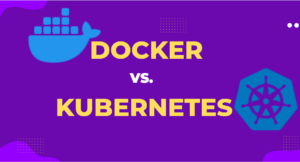In today’s digital age, cloud computing has become a fundamental technology that powers a wide range of applications, services, and businesses. In this article you will learn what is cloud computing and everything which you need know is covered in this article. Whether you’re a tech enthusiast or a business owner looking to leverage the benefits of the cloud, understanding the basics of cloud computing is essential. In this comprehensive guide, we’ll dive into the world of cloud computing and will understand what is cloud computing, explaining its concepts, models, benefits, and real-world applications. So lets start and see what is cloud computing and its benefits.
Table of Contents
Understanding What is Cloud Computing
At its core, cloud computing refers to the delivery of various computing services, including storage, processing power, networking, databases, and more, over the internet. Instead of relying solely on local hardware or on-premises servers, cloud computing allows users to access and utilize these resources from remote data centers.
Key Concepts in Cloud Computing
1-Service Models
Cloud computing offers three primary service models:
Infrastructure as a Service (IaaS)
Infrastructure as a Service (IaaS) provides virtualization service on various computing resources over the internet only. With this service we can rent virtual machines, storage, and networking components as per the requirement and that too on a pay-as-you-go model. This model gives users more control over the underlying infrastructure.
Platform as a Service (PaaS)
PaaS offers a platform that includes the underlying infrastructure as well as development tools, databases, and middleware. It simplifies the process of building, deploying, and managing applications, allowing developers to focus on coding rather than infrastructure management.
Software as a Service (SaaS)
Software as a Service (SaaS) provides complete software applications access over the internet on a subscription basis. Users can access these applications through web browsers without needing to install or maintain them locally. Examples include email services, customer relationship management (CRM) systems, and collaboration tools.
2-Deployment Models
Cloud computing offers various deployment models:
Public Cloud
Services are offered to multiple customers over the internet by third-party providers. These services are highly scalable and cost-effective, as users pay only for the resources they use.
Private Cloud
Resources are used exclusively by a single organization. Private clouds offer more control over data and security but require higher initial investments.
Hybrid Cloud
This model combines elements of both public and private clouds. It allows organizations to maintain sensitive data on a private cloud while utilizing the scalability of public cloud resources for other tasks.
3-Benefits of Cloud Computing
Cloud computing offers numerous advantages, including:
Scalability
Easily scale up or down based on demand, ensuring optimal resource utilization and cost efficiency.
Cost Savings
Pay only for the resources you use, avoiding the need for upfront hardware investments and reducing maintenance costs.
Flexibility
Access resources from anywhere with an internet connection, enabling remote work and collaboration.
Reliability
Cloud providers offer high levels of uptime and redundancy, reducing the risk of downtime.
Innovation
Developers can quickly experiment and deploy new applications without the need for extensive infrastructure setup.
Real-World Applications to Understand What is Cloud Computing
Cloud computing has revolutionized various industries:
Business and Enterprise
Cloud-based tools like SaaS applications, data storage, and collaboration platforms have transformed how businesses operate and interact with customers.
Healthcare
Cloud computing enables secure storage and sharing of patient data, facilitates telemedicine, and accelerates medical research through data analysis.
Education
Cloud-based e-learning platforms provide accessible and scalable education resources to students worldwide.
Entertainment
Streaming services for music, movies, and games rely heavily on cloud infrastructure to deliver content to users on-demand.
Security and Privacy Considerations
While cloud computing offers numerous benefits, it’s essential to address security and privacy concerns. Cloud providers implement robust security measures, but users should also implement encryption, access controls, and regular security audits to safeguard their data.
Conclusion
I hope you have understood What is Cloud Computing very well. Cloud computing has transformed the IT landscape, offering unparalleled scalability, cost-efficiency, and flexibility to individuals and businesses alike. As technology continues to evolve, cloud computing will play a crucial role in shaping the future of how we store, process, and interact with data. Whether you’re a developer, entrepreneur, or simply curious about technology, understanding the basics of cloud computing is a valuable asset in today’s digital world.
If you want to learn more related to this topic and other technical topic then please click here and if you are looking to explore cloud service provider such as AWS then clink on this link.





